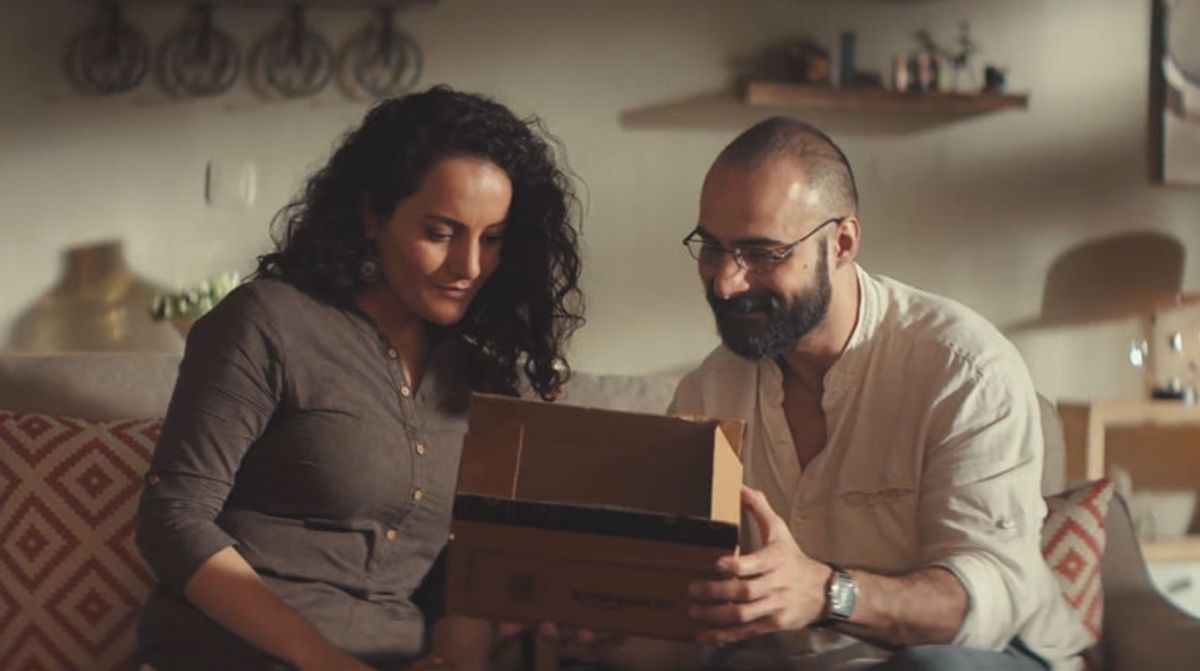- Beyond the Story by Epaphra
- Posts
- When a Delivery Box Becomes Your Content Strategy
When a Delivery Box Becomes Your Content Strategy

Hey Beyonder!
Few weeks back, we talked about the LEGO Principle, how one story can fuel 15+ pieces of content. But here's a question that came up in my DMs
"I love the LEGO idea, but can brands really tell stories in unexpected ways? Not just posts, but... everyday stuff?"
Absolutely. And Amazon's StoryBoxes campaign is the perfect example of how a simple cardboard box became one of the most brilliant storytelling strategies I've ever seen.
🧐 The Problem Most Creators Miss
We think storytelling needs:
-Big budgets
-Professional video shoots
-Complex scripts
-Social media platforms
Wrong.
Stories are everywhere, even in the packaging you send to customers, the receipts you hand out, the emails you write.
Amazon proved this in the most unexpected way.
📦 What Amazon Did (And Why It's Genius)
During the Great Indian Festival in 2019, Amazon India launched something called StoryBoxes.

Here's how it worked:
✅ Every delivery box became a canvas - Instead of plain brown cardboard, each box featured beautiful illustrations and designs
✅ QR codes told deeper stories - Customers could scan codes to discover the real stories of the sellers behind their products
✅ Humanized the marketplace - Instead of faceless transactions, every unboxing became a moment of human connection
✅ Turned packaging into content - Each box was shareable, Instagram-worthy, and conversation-starting
The result? Amazon turned the most mundane part of online shopping, receiving a package into their most powerful storytelling moment.
In other words: A cardboard box became a narrative platform.
4 Storytelling Lessons From a Cardboard Box
1. Sell the Human, Not the Product
Amazon could have talked about "fast delivery" and "wide selection." Instead, they showed you Rani Ravindran, a homemaker from Tamil Nadu selling wooden toys and cotton pillows, and Abdul Gafoor Khatri, who kept his family's 300-year-old Rogan art heritage alive and even created artwork for Barack Obama.
Your move: Stop listing features. Start sharing the humans behind them.
2. Every Touchpoint is a Story Opportunity
Most brands ignore their storytelling space, but Amazon turned even a cardboard box into a story.
Your untapped platforms: Email signatures, receipts, packaging, business cards, Zoom backgrounds, hold music, error messages, thank you pages.
The million-dollar question: What boring touchpoint could become your most memorable story moment?
3. Make Them Part of the Story
Amazon didn't just tell stories, they created story experiences. QR codes turned passive unboxing into active discovery.
Your engagement arsenal: Polls, "finish this story" challenges, behind-the-scenes access, user-generated content, interactive elements.
The rule: If your audience isn't participating, they're not truly engaged.
4. Strike When They're Most Vulnerable
Amazon cracked the code: people are emotionally wide open during unboxing. All defenses down. Pure anticipation and excitement.
Your opportunity: Find your audience's "unboxing moments", when are they most receptive, excited, or emotionally available?
Examples: First-time login, purchase confirmation, milestone celebrations, problem-solving moments, Monday morning motivation.
🎯 Your Everyday Objects Content Strategy
Here's how to apply Amazon's thinking:

Step 1: Object Audit
Look around you right now. Pick one object from:
-Your workspace
-Your daily routine
-Your creative process
Examples: Your coffee cup, the notebook where you write ideas, your phone wallpaper, the plant on your desk, that sticky note that's been there for months.
Step 2: Story Mining
Ask these questions:
-Origin: How did this object get to you?
-Journey: What has this object "witnessed" in your work/life?
-Transformation: How has this object changed you?
-Connection: What does this represent about your values/process?
Step 3: Content Creation
Turn that one object into 3 pieces of content:
Visual Story (Instagram Reel/Carousel): Show the object, share its backstory, connect to a bigger lesson
Professional Angle (LinkedIn Post): Use it as a business metaphor, share what it taught you
Narrative Deep-Dive (Newsletter/Thread): Tell the complete story, extract multiple lessons
🚀 This Week's Amazon Challenge
Ready to find your StoryBox?

I read every response and will feature the most creative discoveries!
Remember: Amazon didn't invent new stories. They found brilliant ways to share the stories that already existed.
Your stories are already there, hiding in plain sight.
Keep discovering stories,
Epaphra
P.S. The most powerful stories aren't created, they're discovered. Amazon turned cardboard into connection. What everyday object in your life is waiting to become your next great story?
